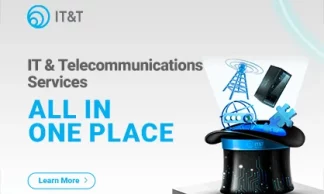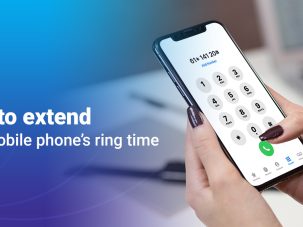The healthcare industry is rapidly shifting toward more participatory and consumer-focused medicine. This significant change in dynamics is what will push many organisations to embrace connected, on-demand and data-driven patient engagement technologies.
In order to be successful, however, providers will be required to rethink their perspective on health IT, adopting a more on-demand style of healthcare delivery that connects patients to their care providers and leverages patient data to make intelligent medical decisions.
In this piece, we will be looking at three such patient engagement strategies that are driven by technology and are transforming the way in which healthcare is delivered across the globe today.
1. Shifting to anywhere care
Care delivery is transcending beyond the four walls of clinics and hospitals, and while the idea of care being delivered entirely remotely is distant into the future, patients and providers alike have begun to embrace it today.
This is most prescient in providers working to make care accessible in low-cost and convenient areas that are suitable for meeting the needs of today’s patients. This may include anything right from developing a simple telemedicine app to set up an urgent care centre, depending on a particular patient’s symptoms.
91% of employers are expected to offer telemedicine benefits to their employees by 2020.
91% of employers are expected to offer telemedicine benefits to their employees by 2020, according to a First Stop Health survey of midsize to large employers. The majority of healthcare experts expect smartphones to be the main channel of healthcare delivery within the next decade.
More and more patients are also accepting virtual interventions as a dependable method to acquire care. Telehealth patient adoption at the beginning of 2020 was up 33% over the previous year, while funding has been booming and the market is expected to reach $243.2 billion AUD by 2026.
Telehealth patient adoption at the beginning of 2020 was up 33% over the previous year, while funding has been booming and the market is expected to reach $243.2 billion AUD.
Organisations can deliver on this by prioritising patient convenience, leveraging patient-related data that will enable providers to deliver remote care or care in low-cost settings, and reframing their idea of consumer experience to furnish personalised solutions as a whole.
All in all, providers can improve patient experience in a number of ways by integrating telemedicine with their practice and make the shift to anywhere care more seamless.
2. Transitioning from digital to smart technologies
It will no longer be sufficient for healthcare providers to focus on digital health technologies alone.
Healthcare settings of the future are expected to be smart: connected to deliver clinical excellence and operational efficiency in a patient-centric manner.
These organisations will be driven by intelligent technologies such as advanced analytics, machine learning, AI (artificial intelligence) applications and robotic process automation that tame the wave of user-generated and clinical data. Not only is the infrastructure going to be optimised accordingly, but the system will be squarely focused on the patient and staff experience.
Healthcare settings of the future are expected to be smart: connected to deliver clinical excellence and operational efficiency in a patient-centric manner.
AI and machine learning (ML) have aided healthcare providers to advance patient safety, increase operational efficiency and therefore deliver a better patient experience. These tools leverage data collected from patients to improve outcomes and furnish personalised recommendations.
AI and ML algorithms can also help providers make sense of the vast amounts of patient data coming in from remote patient monitoring (RPM) devices and healthcare wearables.
Promoting smart technologies will allow for more aging in place – ultimately cutting costs – as well as help providers detect minor irregularities in chronic illnesses before they convert into significant health challenges.
3. Prioritising interoperability
Dr Ashwini Zenooz, Chief Medical Officer and General Manager of healthcare and life sciences at Salesforce, in a recent interview said that in order for providers to optimise their efforts toward augmenting patient engagement, they should continue to prioritise interoperability with soon-to-be-used or existing technologies.
“Patient engagement technologies are only as impactful as their ability to provide a true 360-degree view of the patient,” she asserted. “A holistic view of the patient requires insight into not just their medical history and information, but also all of the touch-points they’ve had across the organisation, whether that be digital, over the phone or in person. And this information needs to exist in one, singular view in order for it to be useful.”
Patient engagement technologies are only as impactful as their ability to provide a true 360-degree view of the patient.
However, all the crucial information required to supercharge patient-engagement technologies is traditionally present in disparate systems of record, apps or other such platforms. That is why it is vital for providers to continue to prioritise interoperability between their patient engagement technologies and other systems currently in use.
It is vital for providers to continue to prioritise interoperability between their patient engagement technologies and other systems currently in use.
Additionally, with new interoperability rules enabling greater patient access to their own medical data, it’s vital that healthcare organisations are focusing critically on their interoperability capabilities.
This sharing and aggregating of data across apps and platforms is not only beneficial on an individual case basis – between patient, provider and/or call center agent – but can help organisations scale the impact of their patient engagement technologies by generating data-driven insights and recommendations across populations.
Conclusion
Opportunities are set to appear at the intersection of technology, consumerism and markets for those willing to move past their traditional limitations.
To do this, strategic engagement agendas — whether the focus be local, regional or global — will require laying the foundation that not only supports the organisation of today, but sets in motion the organisation of tomorrow.
No matter what strategy you opt for, the future surely looks bright for healthcare businesses that are willing to adapt, embrace technology and place patients at the apex of this equation.






